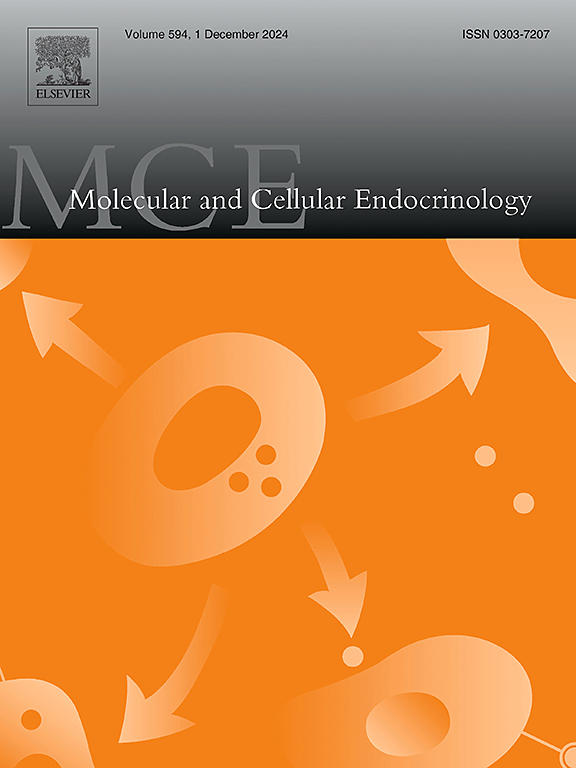TIGAR relieves PCOS by inhibiting granulosa cell apoptosis and oxidative stress through activating Nrf2
IF 3.8
3区 医学
Q2 CELL BIOLOGY
引用次数: 0
Abstract
This study aimed to elucidate the role of TP53-induced glycolysis and apoptosis regulator (TIGAR) in polycystic ovary syndrome (PCOS). A rat model PCOS was constructed by subcutaneous injection with dehydroepiandrosterone (DHEA). Follicular atresia and reduced granular cells (GCs) in ovaries suggested successful modeling. The low expression of TIGAR was observed in ovarian tissue of PCOS rat. To explore the role of TIGAR in PCOS, lentivirus carrying the TIGAR were used to up-regulate TIGAR expression. TIGAR overexpression reduced the DHEA-induced increase of ovarian weight, the levels of estradiol (E2), and the ratio of luteinizing hormone/follicle-stimulating hormone (LH/FSH) in the serum, as well as improved the morphology of the follicle, especially increased the thickness of the GC layer, which attributed to the inhibition of apoptosis by TIGAR. In addition, high expression of TIGAR inhibited oxidative stress in ovaries of PCOS rat, as evidenced by decreased level of malondialdehyde (MDA), and reactive oxygen species (ROS), and enhanced activity of glutathione peroxidase (GPX) and superoxide dismutase (SOD). Mechanically, Nrf2/OH-1 signal pathway was activated by TIGAR. The effect of TIGAR on PCOS were verified in the primary rat GCs treated with dihydrotestosterone, but also the rescue experiment was performed. Downregulation of Nrf2 reversed the effects of TIGAR, indicating that TIGAR suppressed oxidative stress and GC apoptosis by activating Nrf2/OH-1 pathway in PCOS. Finally, non-targeted metabolomics revealed that TIGAR might affect the energy metabolic pathway, thereby altering the metabolic profile of primary rat GCs. This study provided new insights into the prevention and treatment of PCOS.
TIGAR 通过激活 Nrf2 抑制颗粒细胞凋亡和氧化应激,从而缓解多囊卵巢综合症。
本研究旨在阐明 TP53 诱导的糖酵解和细胞凋亡调节因子(TIGAR)在多囊卵巢综合征(PCOS)中的作用。通过皮下注射脱氢表雄酮(DHEA)构建了大鼠多囊卵巢综合征模型。卵泡闭锁和卵巢中颗粒细胞(GCs)的减少表明建模成功。在多囊卵巢综合症大鼠的卵巢组织中观察到 TIGAR 的低表达。为了探索TIGAR在多囊卵巢综合症中的作用,研究人员使用了携带TIGAR的慢病毒来上调TIGAR的表达。TIGAR的过表达降低了DHEA诱导的卵巢重量增加、雌二醇(E2)水平和血清中黄体生成素/卵泡刺激素(LH/FSH)的比值,并改善了卵泡的形态,尤其是增加了GC层的厚度,这归因于TIGAR抑制了细胞凋亡。此外,TIGAR的高表达抑制了PCOS大鼠卵巢的氧化应激,表现为丙二醛(MDA)和活性氧(ROS)水平降低,谷胱甘肽过氧化物酶(GPX)和超氧化物歧化酶(SOD)活性增强。从机制上讲,TIGAR 激活了 Nrf2/OH-1 信号通路。TIGAR对多囊卵巢综合征的影响在用双氢睾酮处理的原代大鼠GC中得到了验证,同时还进行了挽救实验。Nrf2的下调逆转了TIGAR的作用,表明TIGAR通过激活Nrf2/OH-1通路抑制了PCOS中的氧化应激和GC凋亡。最后,非靶向代谢组学显示,TIGAR可能会影响能量代谢途径,从而改变原代大鼠GC的代谢谱。这项研究为多囊卵巢综合征的预防和治疗提供了新的见解。
本文章由计算机程序翻译,如有差异,请以英文原文为准。
求助全文
约1分钟内获得全文
求助全文
来源期刊

Molecular and Cellular Endocrinology
医学-内分泌学与代谢
CiteScore
9.00
自引率
2.40%
发文量
174
审稿时长
42 days
期刊介绍:
Molecular and Cellular Endocrinology was established in 1974 to meet the demand for integrated publication on all aspects related to the genetic and biochemical effects, synthesis and secretions of extracellular signals (hormones, neurotransmitters, etc.) and to the understanding of cellular regulatory mechanisms involved in hormonal control.
文献相关原料
公司名称
产品信息
阿拉丁
2-chloro-L-phenylalanine
阿拉丁
DAPI
阿拉丁
Dehydroepiandrosterone (DHEA)
 求助内容:
求助内容: 应助结果提醒方式:
应助结果提醒方式:


